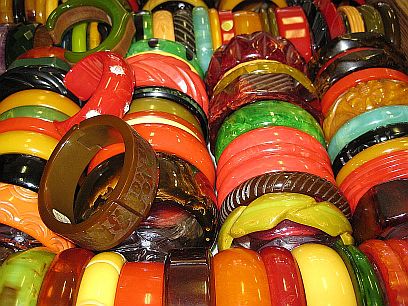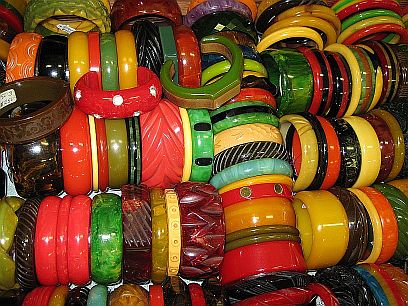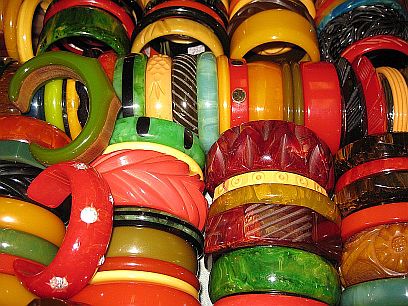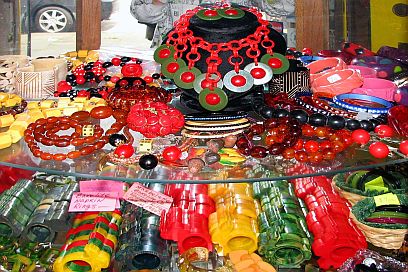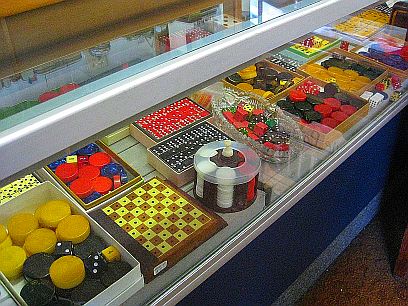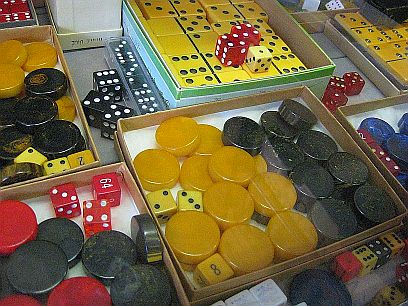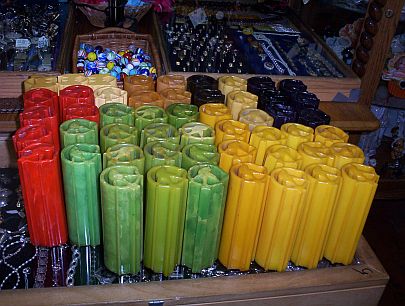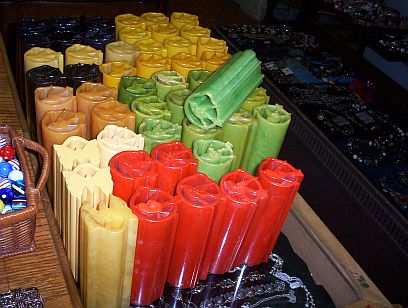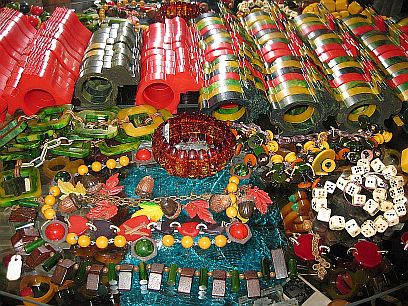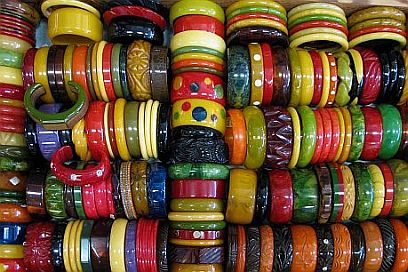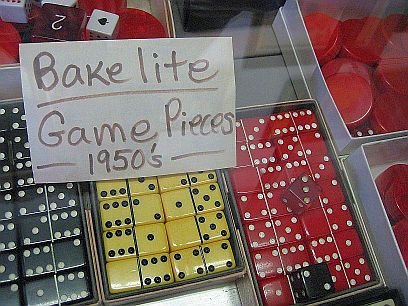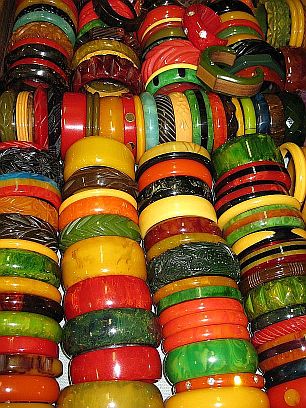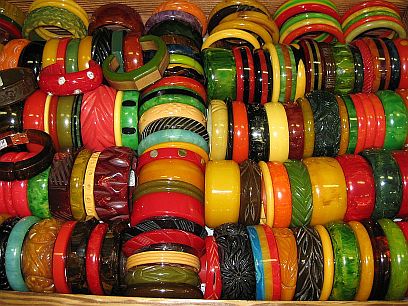A Short History of Bakelite
A Belgian scientist, Dr. Leo Baekeland invented Bakelite. In 1907 he was working as independent chemist when he discovered the compound of carbolic acid and formaldehyde. He found that it did not melt. He trademarked it "Bakelite" as well as two other variations, "catalin" and "marblette" - which today are also referred to as Bakelite.
Bakelite was the first synthetic plastic. It became very popular. Many objects from electrical plugs, radios, telephone and jewelry were made from Bakelite. It was even used on the dashboard face of the Mercedes Benz car.
Pieces dating back to the 1920s-1940s have oxidized, developing a patina that makes the color to appear different from the original color. For example, white often turns to butterscotch, blue changes to green, and pink turns to orange. The most common original colors were brown, black, red, green, and white
When the Bakelite patent expired in 1927, it was acquired by the Catalin Corporation that same year. They began mass production under the name "Catalin". The Catalin Corporation was responsible for nearly 70% of all phenol ic resins that exist today. Bakelite jewelry became very popular during during the Great Depression when people did not have much money. They could afford this colorful jewelry. By the end of the World War II, new technologies for other plastics had developed. These new products were molded plastics such as Lucite,Fiberglass, Vinyl, and Acrylic.
Much more information is available on the Internet about the History of Bakelite.
|
 Gaslight & Shadows Antiques
Gaslight & Shadows Antiques